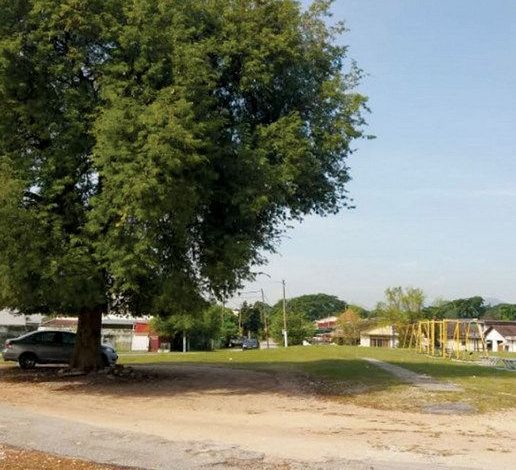

The bloody Seafield temple incident late last year prompted me to pen my memories. This is in response to Ipoh Echo’s articles on Heritage, History and the Past.
When I was 10 years old we lived in government quarters in Birch Gardens, Ipoh. In December 1967, a Malay family from the Selangor royal household moved in as our neighbour.
This was my first close encounter with a Malay family. Raja Aris, the patriarch, had five children. I become pally with the second son, Raja Anuar (Din). Anuar studied at Raja Chulan Secondary School while I was with Anglo Chinese School. He spoke Bahasa, I conversed in English. Somehow or other we understood one another instinctively.
Growing up in the 60s, especially at the Birch Gardens’ government quarters, provided us with a rich experience, unique in those days. We were children of government servants. There was little or no technological gizmos to keep us entertained like today. So we kept ourselves occupied with our simple games.
We played football and hockey and traditional games like marbles and hop scotch that were in fashion in those days. At the back of our quarters, there was a coconut plantation (now Jalan Nehru housing estate). We made tops from guava tree branches found on the plantation. We would trap spiders and magpies found at the jungle fringe. Fighting was the theme of most of our games – fighting spiders and fighting fish. Once caught, the spiders would be placed in separate matchboxes and fights would be staged between them.
Nearby was Sungai Pari. We would swim and catch Siamese fighting fish in the nipa swamps and watch them fight one another. When we returned home, Din’s grandma would whack both of us. Din’s family treated me like their own son. I considered the grand old lady as my own grandmother. My parents never interfered whenever I was disciplined by Din’s grandmother. In fact, my mother encouraged her to treat me in that manner.
If Din or I were hungry, we would pop into one another’s kitchen to eat whatever was available. There were no hang-ups. My family never ate pork and Din’s family never served me beef.
During weekends we would walk to the Ipoh library (beside Royal Ipoh Club) and spent our time playing games, disturbing girls and reading story books and comics. In the evening Din’s schoolmate, M. Sharif would join us to play his guitar. He became a famous recording artist later.
It was the norm then. Whether you are alone or with friends you would come across the ubiquitous hawkers. In the morning we had an Indian guy selling sweets and a Chinese guy selling chee chong fun on bicycles. In the evening, the tau foo fah and the mee rebus men would make their rounds.
A plate of chee chong fun costs 40 cents, tau foo fah was 15 cents while mee rebus was 70 cents. Unlike today, you had to provide your own chicken eggs for taste. There was so much to eat. We would share with our neighbours.
My childhood experience touched me deeply. Till today Raja Anuar (Din), a 64-year-old retiree, is still my good friend.
But at this moment of reporting, unity and harmony are at the crossroads. We need to work harder to achieve peace, harmony and tranquility, the hallmarks of Birch Gardens back in the 1960s.
S. Sundralingam


